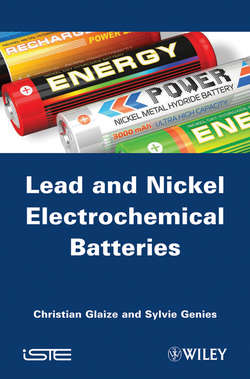Описание книги
The lead-acid accumulator was introduced in the middle of the 19th Century, the diverse variants of nickel accumulators between the beginning and the end of the 20th Century. Although old, these technologies are always very present on numerous markets. Unfortunately they are still not used in optimal conditions, often because of the misunderstanding of the internal electrochemical phenomena. This book will show that batteries are complex systems, made commercially available thanks to considerable amounts of scientific research, empiricism and practical knowledge. However, the design of batteries is not fixed; it is subject to constant developments as a result of user feedback and validation processes which are often long and fastidious. This book attempts to show that it is not possible to consider a family of batteries as having fixed, applicable properties and characteristics whatever the application and the technology used in their manufacture. For this reason, the authors have chosen to present the fundamental electrochemical and chemical phenomena involved in as simple and as clear a way as possible. It is essential to be aware of these mechanisms in order to develop suitable theoretical models. This work will be of particular interest to those working in the field of electrical engineering and to industrialists, the final users of these technologies. It will also be of interest to electrochemists, as experts in lead or nickel batteries are becoming fewer and farther between, and their knowledge and practical skills are steadily being lost. Contents Part 1. Universal Characteristics of Batteries 1. Definitions and Methods of Measurement. Part 2. Lead–Acid Batteries 2. The Operation of Lead–Acid Batteries. 3. Internal Composition and Types of Lead–Acid Batteries. 4. Lead Batteries: Main Characteristics. 5. Manufacturing Starting, Lighting and Ignition Batteries. Part 3. Introduction to Nickel-Based Batteries 6. Nickel–Cadmium Batteries. 7. Nickel–Metal Hydride Batteries. 8. Other Nickel-Based Batteries.
